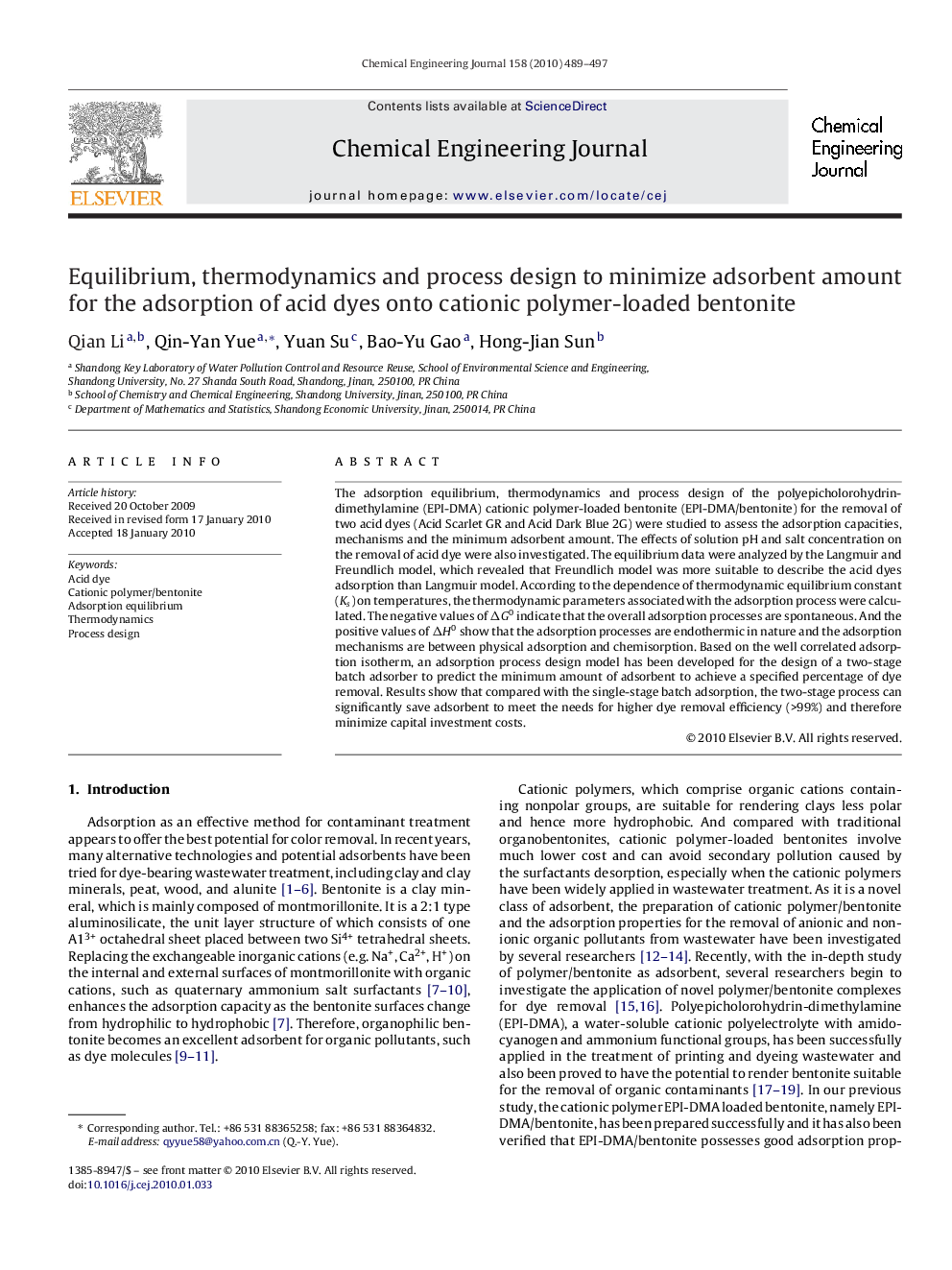| Article ID | Journal | Published Year | Pages | File Type |
|---|---|---|---|---|
| 151667 | Chemical Engineering Journal | 2010 | 9 Pages |
The adsorption equilibrium, thermodynamics and process design of the polyepicholorohydrin-dimethylamine (EPI-DMA) cationic polymer-loaded bentonite (EPI-DMA/bentonite) for the removal of two acid dyes (Acid Scarlet GR and Acid Dark Blue 2G) were studied to assess the adsorption capacities, mechanisms and the minimum adsorbent amount. The effects of solution pH and salt concentration on the removal of acid dye were also investigated. The equilibrium data were analyzed by the Langmuir and Freundlich model, which revealed that Freundlich model was more suitable to describe the acid dyes adsorption than Langmuir model. According to the dependence of thermodynamic equilibrium constant (Ks) on temperatures, the thermodynamic parameters associated with the adsorption process were calculated. The negative values of ΔG0 indicate that the overall adsorption processes are spontaneous. And the positive values of ΔH0 show that the adsorption processes are endothermic in nature and the adsorption mechanisms are between physical adsorption and chemisorption. Based on the well correlated adsorption isotherm, an adsorption process design model has been developed for the design of a two-stage batch adsorber to predict the minimum amount of adsorbent to achieve a specified percentage of dye removal. Results show that compared with the single-stage batch adsorption, the two-stage process can significantly save adsorbent to meet the needs for higher dye removal efficiency (>99%) and therefore minimize capital investment costs.
